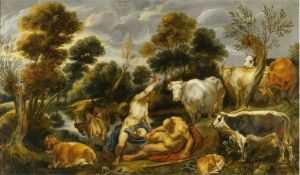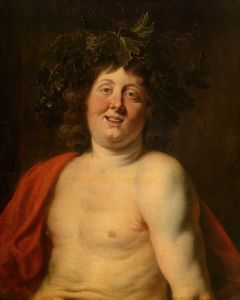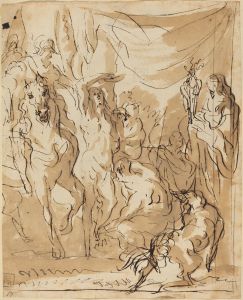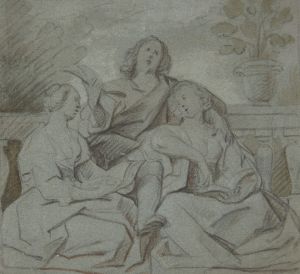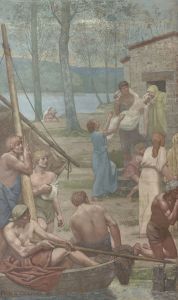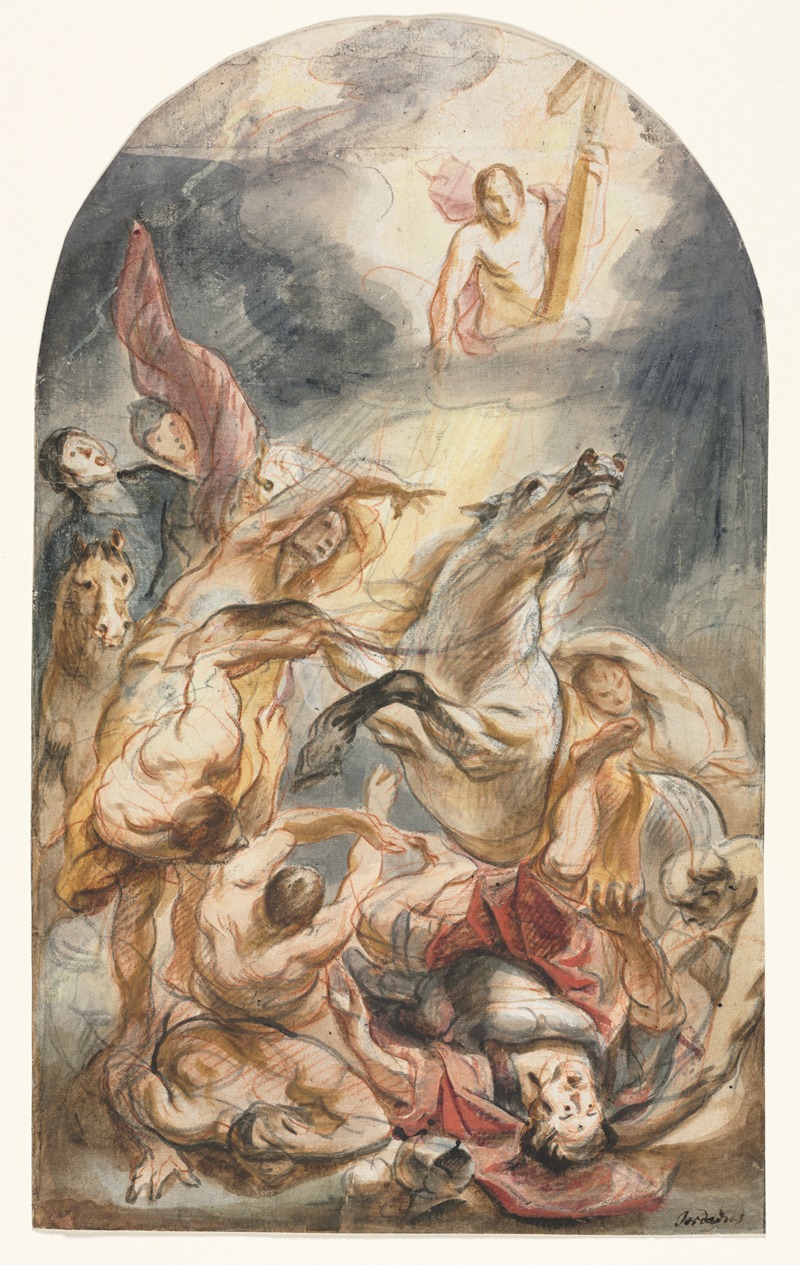
The Conversion of Saul with Christ and the Cross
A hand-painted replica of Jacob Jordaens’s masterpiece The Conversion of Saul with Christ and the Cross, meticulously crafted by professional artists to capture the true essence of the original. Each piece is created with museum-quality canvas and rare mineral pigments, carefully painted by experienced artists with delicate brushstrokes and rich, layered colors to perfectly recreate the texture of the original artwork. Unlike machine-printed reproductions, this hand-painted version brings the painting to life, infused with the artist’s emotions and skill in every stroke. Whether for personal collection or home decoration, it instantly elevates the artistic atmosphere of any space.
Jacob Jordaens, a prominent Flemish Baroque painter, is known for his dynamic compositions and vibrant use of color. One of his notable works is "The Conversion of Saul with Christ and the Cross." This painting captures the dramatic biblical moment when Saul of Tarsus, later known as the Apostle Paul, experiences a profound spiritual transformation on the road to Damascus.
The scene depicted in the painting is derived from the New Testament, specifically the Acts of the Apostles (Acts 9:1-19). According to the biblical account, Saul, a fervent persecutor of Christians, is struck by a divine light and hears the voice of Christ asking, "Saul, Saul, why do you persecute me?" This moment marks the beginning of Saul's conversion to Christianity, a pivotal event in Christian history.
Jordaens' interpretation of this event is characterized by his masterful use of light and shadow, which enhances the drama of the scene. The painting likely features a strong contrast between the divine light that envelops Saul and the darker tones of the surrounding environment, emphasizing the supernatural nature of the event. Jordaens, known for his ability to convey emotion and movement, captures Saul's astonishment and the chaos of the moment with great skill.
In the composition, Saul is typically depicted falling from his horse, a common motif in artistic representations of this biblical story. The inclusion of Christ and the cross in the painting underscores the religious significance of the event and Saul's impending transformation. Jordaens' work often reflects his deep understanding of human emotion and his ability to convey complex narratives through visual art.
Jacob Jordaens was a contemporary of Peter Paul Rubens and Anthony van Dyck, and like them, he was heavily influenced by the Baroque style, which is characterized by dramatic expression, rich color, and intense light and shadow. Although Jordaens never traveled to Italy, his work shows the influence of Italian Baroque artists, particularly in his use of chiaroscuro and dynamic compositions.
"The Conversion of Saul with Christ and the Cross" exemplifies Jordaens' ability to blend religious themes with the Baroque aesthetic, creating a powerful visual narrative that engages viewers. His work often includes a sense of movement and energy, drawing the viewer into the scene and inviting them to experience the emotional intensity of the moment.
While Jordaens is perhaps best known for his genre scenes and portraits, his religious paintings, such as this one, demonstrate his versatility and skill as an artist. His ability to convey complex theological themes through his art has earned him a lasting place in the history of European painting.
Overall, Jacob Jordaens' "The Conversion of Saul with Christ and the Cross" is a testament to his artistic talent and his ability to interpret significant religious events with both emotional depth and technical proficiency.






